The Liberation Route Europe Podcast
As part of the Liberation Route Europe experience, the LRE Foundation is developing a podcast series and audio content for the visitors to get an immersive and educational experience along the trails and themed routes.
Why a Liberation Route
Europe Podcast?
Podcasts are a great way for non-profit organisations and institutions working in cultural heritage to reach a wider audience and share their stories. According to a study from July 2021 on global podcast consumption, the number of podcast listeners worldwide has steadily increased and is predicted to rise even further. In 2020, the number of podcast listeners worldwide amounted to 332.2 million internet users, while this number grew to 504 in 2022. [Source: Statista]
Podcast listeners tune in for various reasons, such as learning new things (74%), entertainment (71%), staying up to date with the latest topics (60%), and relaxing (51%) [Source: Podcast Statistics 2023 – TrueList].
Podcasts allow institutions to share cultural heritage and dig deeper into topics than other editorials and channels usually allow for. Moreover, podcasts can help build a sense of community and connect with people who share similar interests. They can be used to promote events, share news and provide educational content.
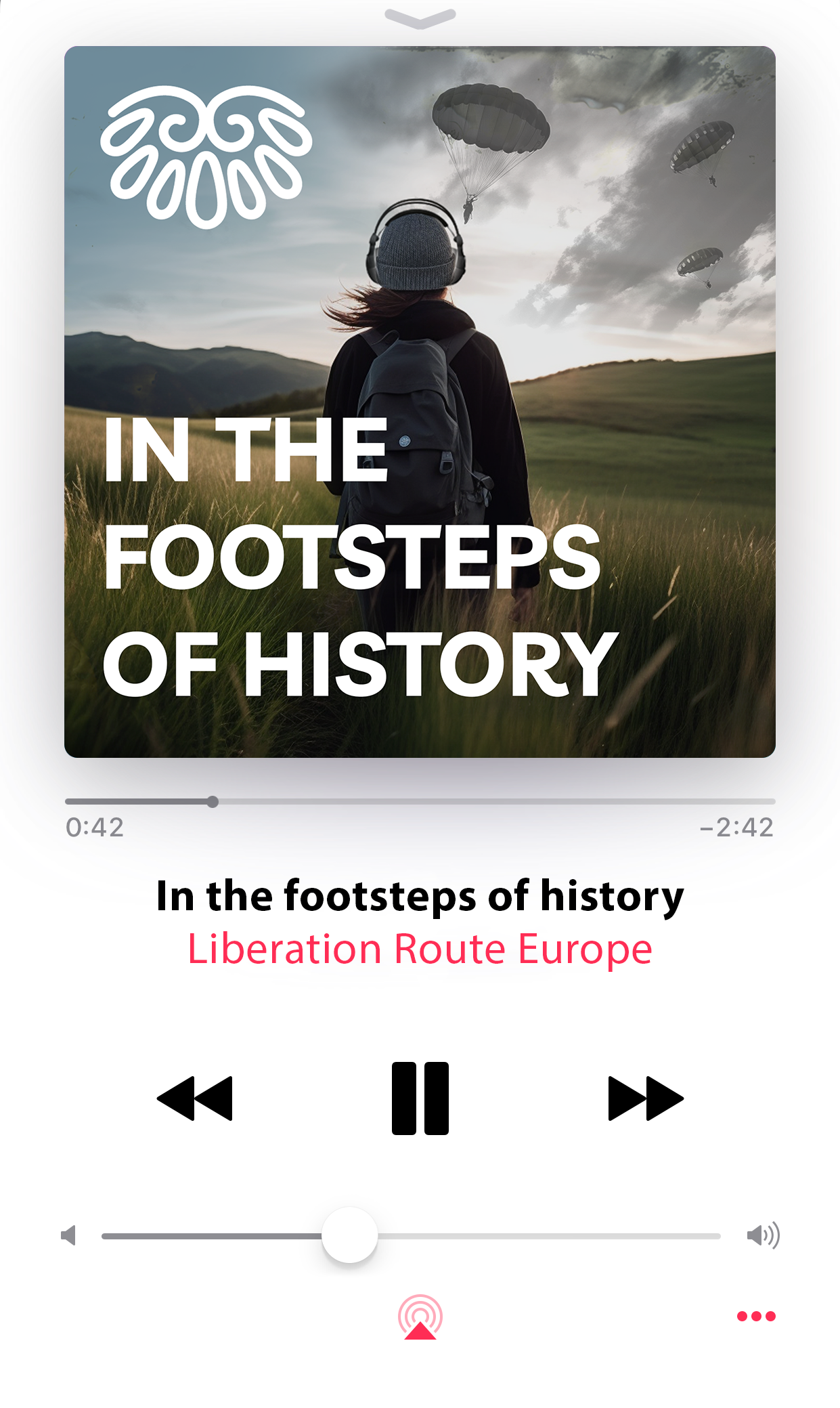
The Concept
Following "In The Footsteps Of History"
The podcast, titled “In the Footsteps of History”, is designed to enrich the visitor experience along the Liberation Route Europe by complementing the many stories, sites and «audio-spots» that can be found along the European trails.
This podcast aims to take listeners on a journey along the route, where they can find themselves on the path of liberation and discover WWII remembrance sites. The podcast is a companion when you are out on the route or an immersive documentary listened to at home.
Using a rich soundtrack, the episodes narrate the stories of the war through various means, such as interviews, anecdotes, objects, or extracts from letters and personal stories.
The show’s host, whether a journalist, historian, or avid hiker with a deep passion for WWII history, embarks on a journey to meet with historians and eyewitnesses. In their hike, the host takes us along the path of soldiers and civilians who lived through that harsh period. This journey takes place in a natural setting and is interwoven with interviews, stories, and a shared sense of European identity.
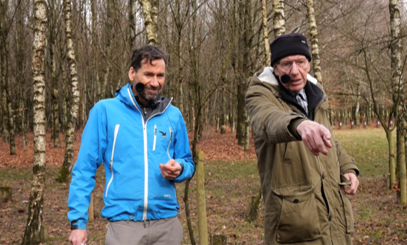
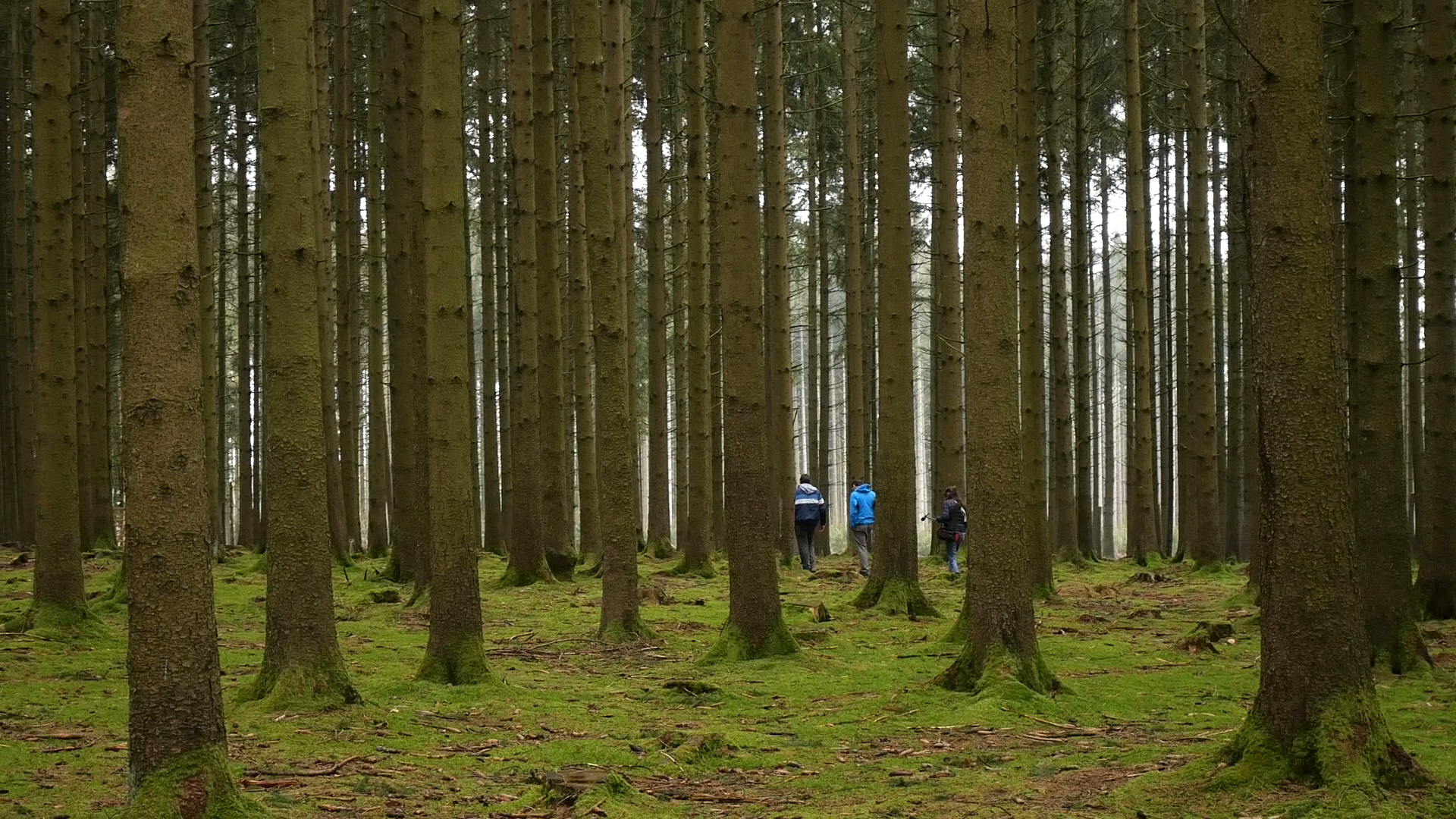
Formats
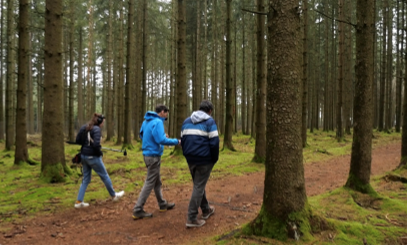
Podwalks
The podwalk episode(s) is designed as an introduction to the route. The host introduces the listener to the main historical events and memorial sites along the route linked to the specific storyline in just ten minutes. The narrative is dynamic, with a natural tone.
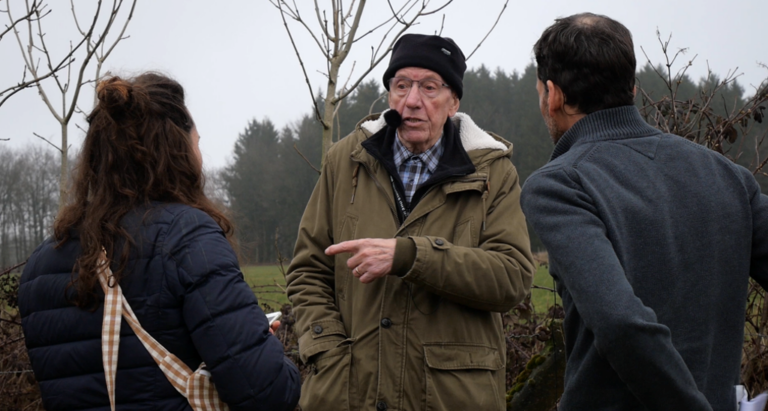
Interviews
The podcast concept includes two interview formats: one of 30 minutes involving recording on-site with an expert (a historian or a tour guide) or an eyewitness (veteran or civilian) and a shorter one of about 10 minutes which can be recorded remotely with professional equipment.
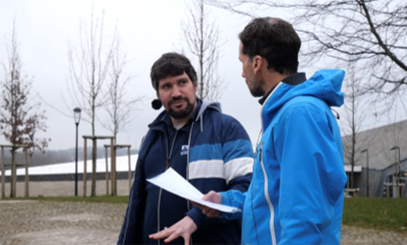
Stopovers
Some episodes can be conceived as stopovers, moments when the hiker stops and dives deeper into the story. These episodes last about 5 minutes and allow us to share a letter, make a portrait or tell the story of an object linked to the main storyline.
Pilot episodes
Proof of concept in Bastogne, Belgium
As a pilot, we worked with natif. to develop episodes linked to the Battle of the Bulge storyline, one of WWII’s most crucial and complex military operations (December 1944 – January 1945). At the beginning of the creative process, we analysed the themed route Around Bastogne. We decided to divide the trail into five episodes that take the public on a virtual hike while covering the main stories linked to this storyline.
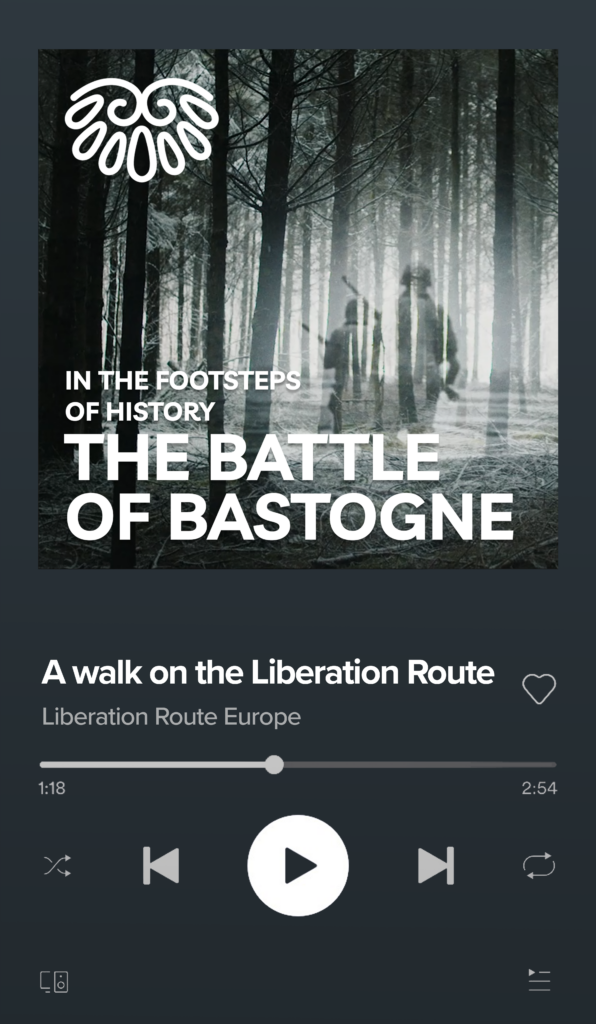
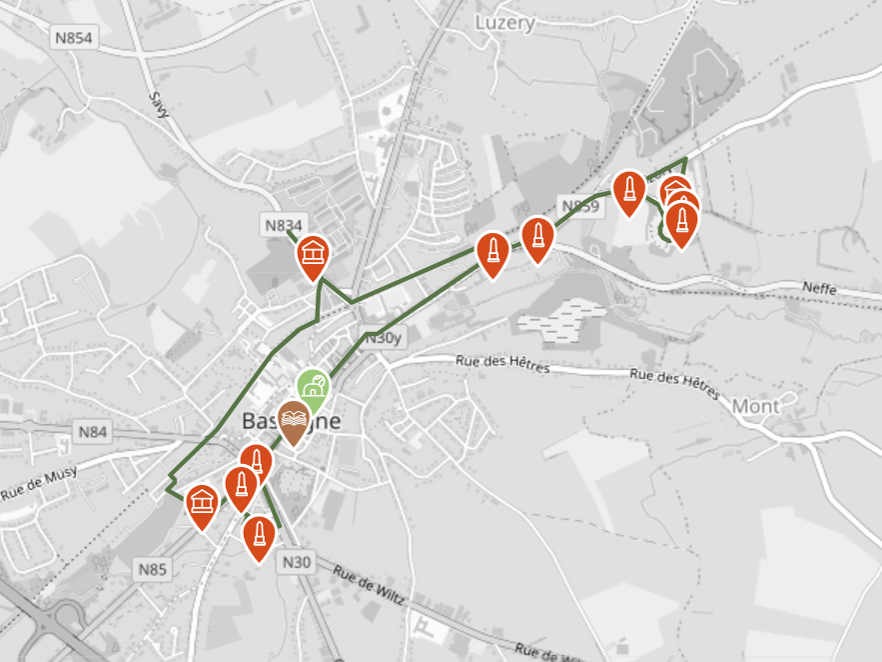
The Episodes
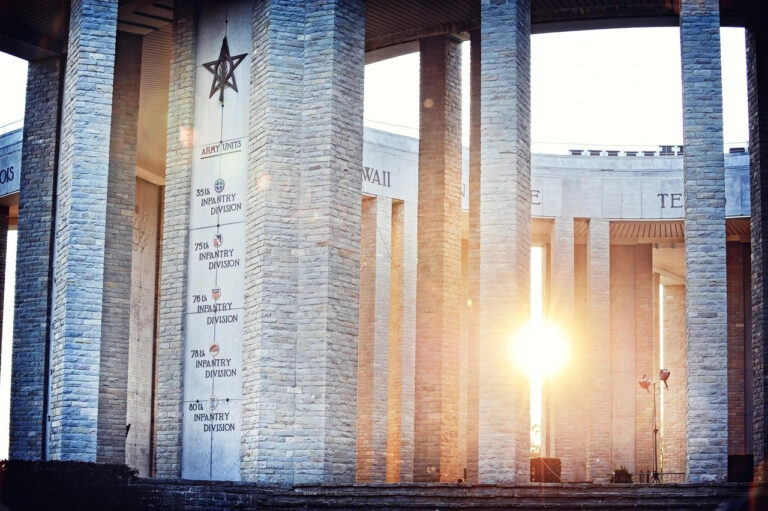
The Podwalk
In this 10-minute episode, British journalist and storyline host Rich Woodruff leads listeners on the “Around Bastogne” themed route, introducing them to the Battle of Bastogne and the surrounding Belgian Ardennes region.
The podwalk introduces the storyline and sets the tone for the series’ other episodes.

The Interviews
The pilot interviews include:
Henri Mignon, Battle of the Bulge eye-witness and tour guide. He was a child during the war and saw his father die before his eyes. The interview is conducted along the route.
Peter Schrijvers, historian and expert on the Battle of the Bulge. The interview is conducted remotely.
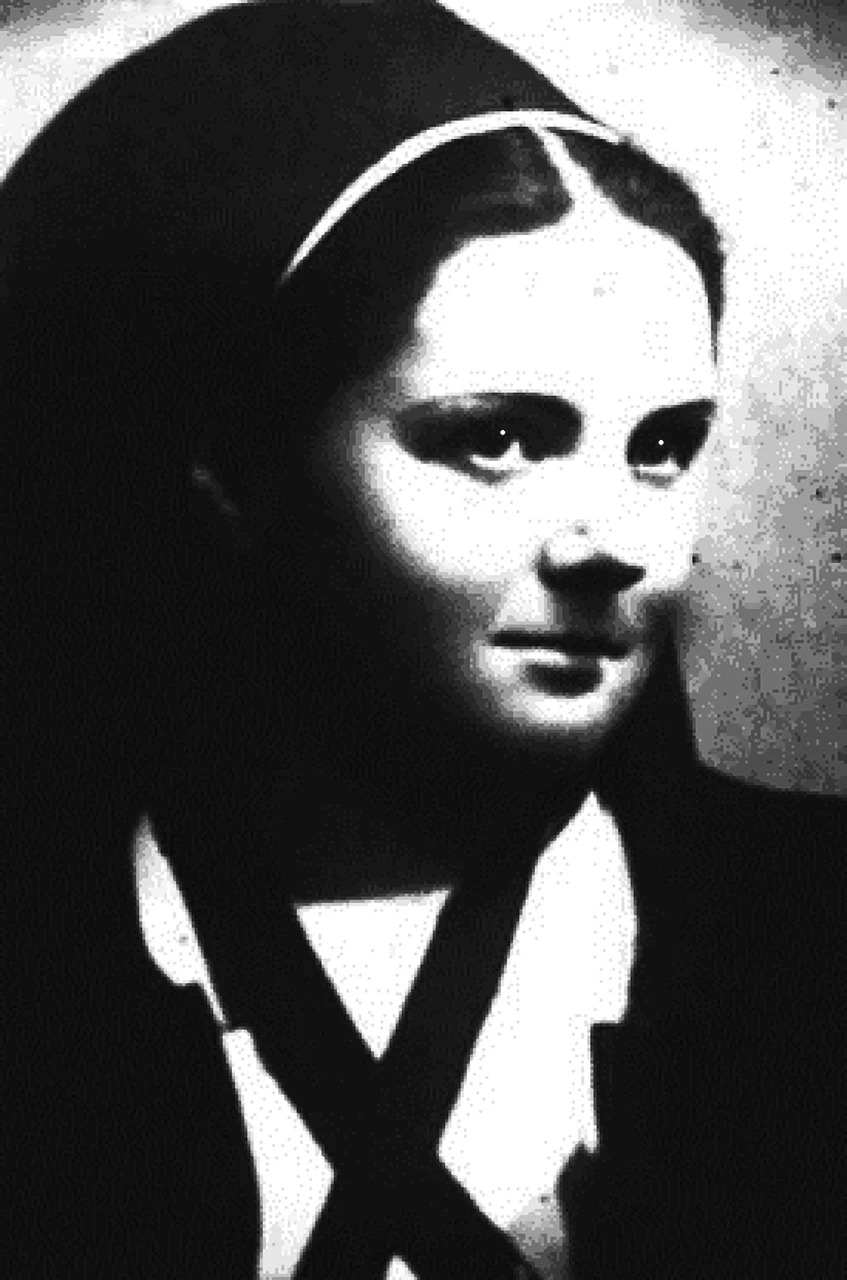
The Stopovers
The stopovers pilot includes:
A letter from a German soldier to the family of one of his comrades who died during the battle and recovered by the Bastogne War Museum.
A portrait of Renée Lemaire, a nurse from Bastogne who died during the Battle of the Bulge.